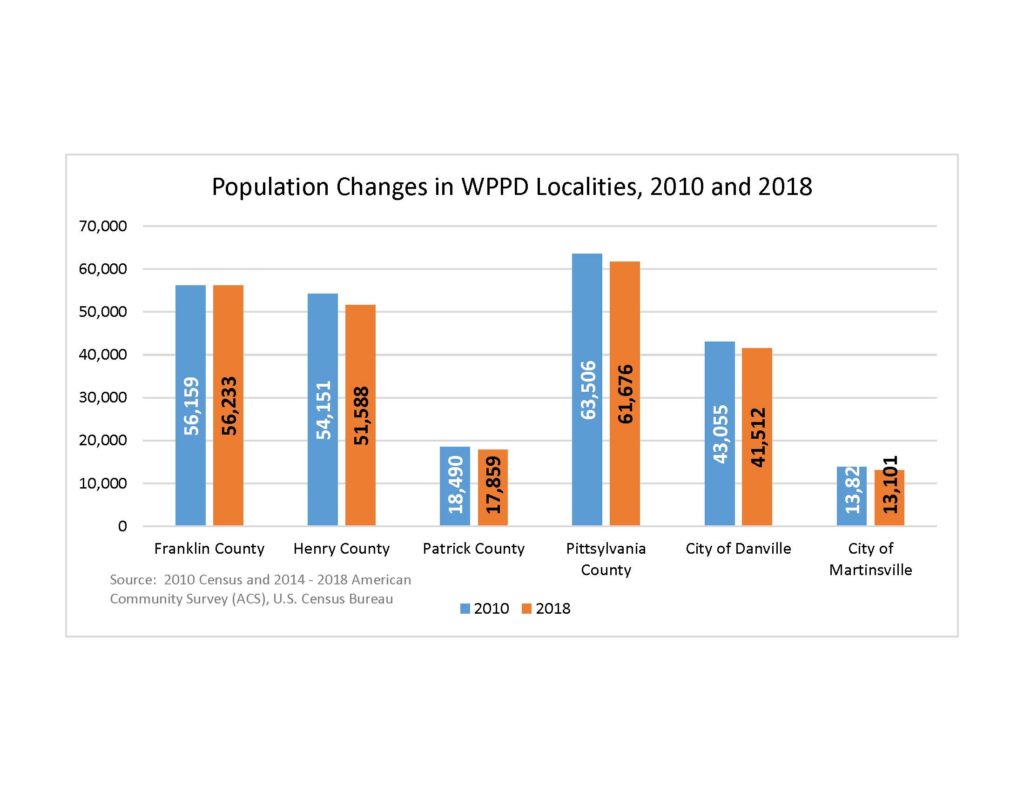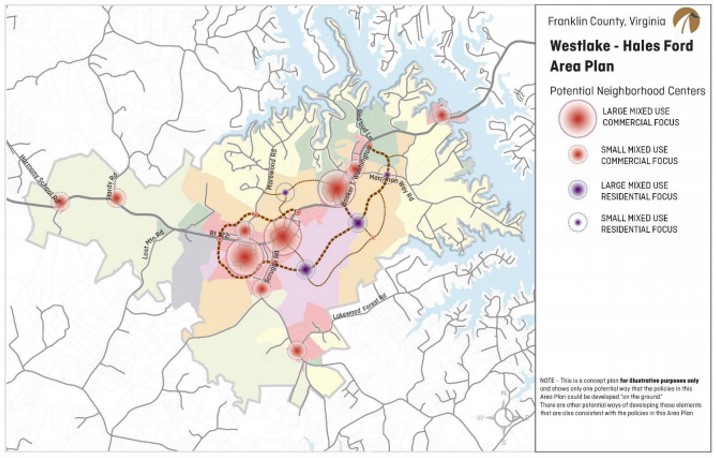On Thursday, December 19th, the U.S. Census Bureau released the 2014 – 2018 American Community Survey (ACS), which is the latest annual estimate published by the agency. While the decennial census, which takes place every ten years is a full count of the population of the United States, its constituent states, and localities, the ACS is a sample count, and subject to margins of error, which are included in the data. Data comprising the ACS includes information about population characteristics, housing, social attributes such as educational attainment, journey to work, and other data.
The 2018 ACS indicates that most of the localities comprising the west Piedmont Planning District lost population between the 2010 Census and the 2018 ACS; Franklin County’s population increased slightly, from 56,159 to 56,233. The region’s population as a whole also lost population, declining from 249,182 in 2010 to 241,969 in 2018. The graph below illustrates population changes in the region by locality.

According to the 2018 ACS, 52,808 persons, or nearly 22 percent, of the region’s population, is age 65 and over. This compares with 18.6 percent of the region’s population over age 65 in the year 2010. This trend indicates that the region’s older population is increasing, and with that increase will be the need for a greater emphasis on services for the age 65 and over population cohort, particularly with regard to greater transportation options. In future years, therefore, there will likely be a need for better and more far-reaching transit services, as well as demand-response services in the region, since a smaller share of people over age 65 drive, compared to younger age groups. Trips to medical appointments, recreational destinations, and shopping will be needed.
One solution to mobility issues for older Americans could be a regional transportation paradigm based on the FlexDanmark system, which is an interconnected network of demand response providers under one umbrella. Please see my November 26th blog entitled Danish Transportation Model Could Benefit Our Region and State, which expands on FlexDanmark in great detail at https://ridesolutions.org/2019/11/26/danish-transportation-model-could-benefit-our-region-and-state/. Another solution to serving an increasingly aging population is the coordination of transportation and land use. Higher density, mixed-use population and commercial centers are ideal for older populations because housing can be built within close proximity to shopping centers, parks, community centers, libraries, medical facilities, and other popular destinations. In these multi-use, compact centers, an interconnected street pattern with sidewalks and bikeways facilitate easy access for all people, including those over age 65 and individuals with disabilities. Franklin County’s Westlake – Hales Ford Area Plan serves as a great example of a blueprint to create such a multi-modal, connected, mixed-use center that would be ideal for older residents, but also for anyone who would rather live within walking or bicycling distance of shopping and other services and destinations. Please see below an image articulating the interconnected future land use and transportation system of the Westlake-Hales Ford area of the county.



